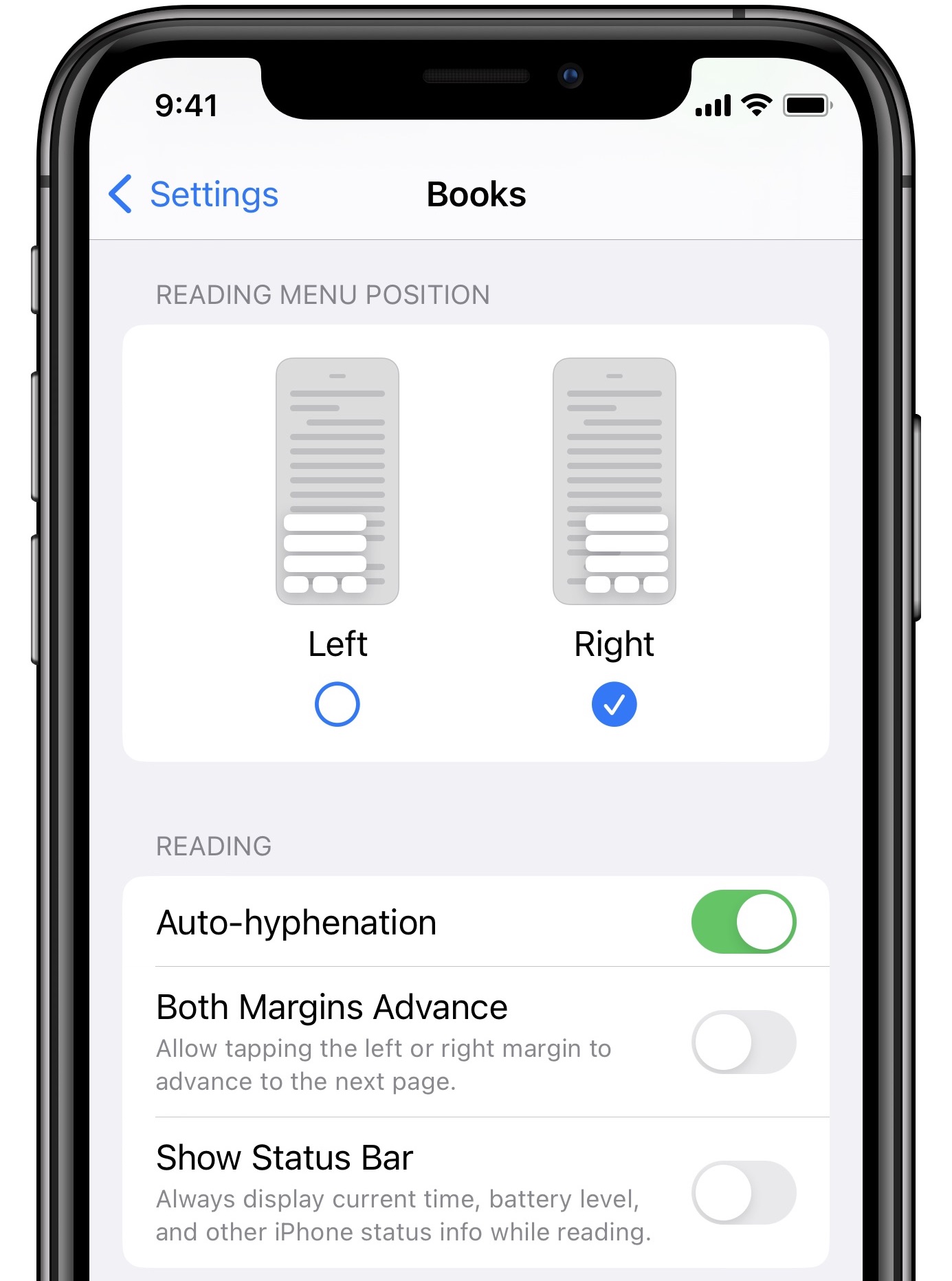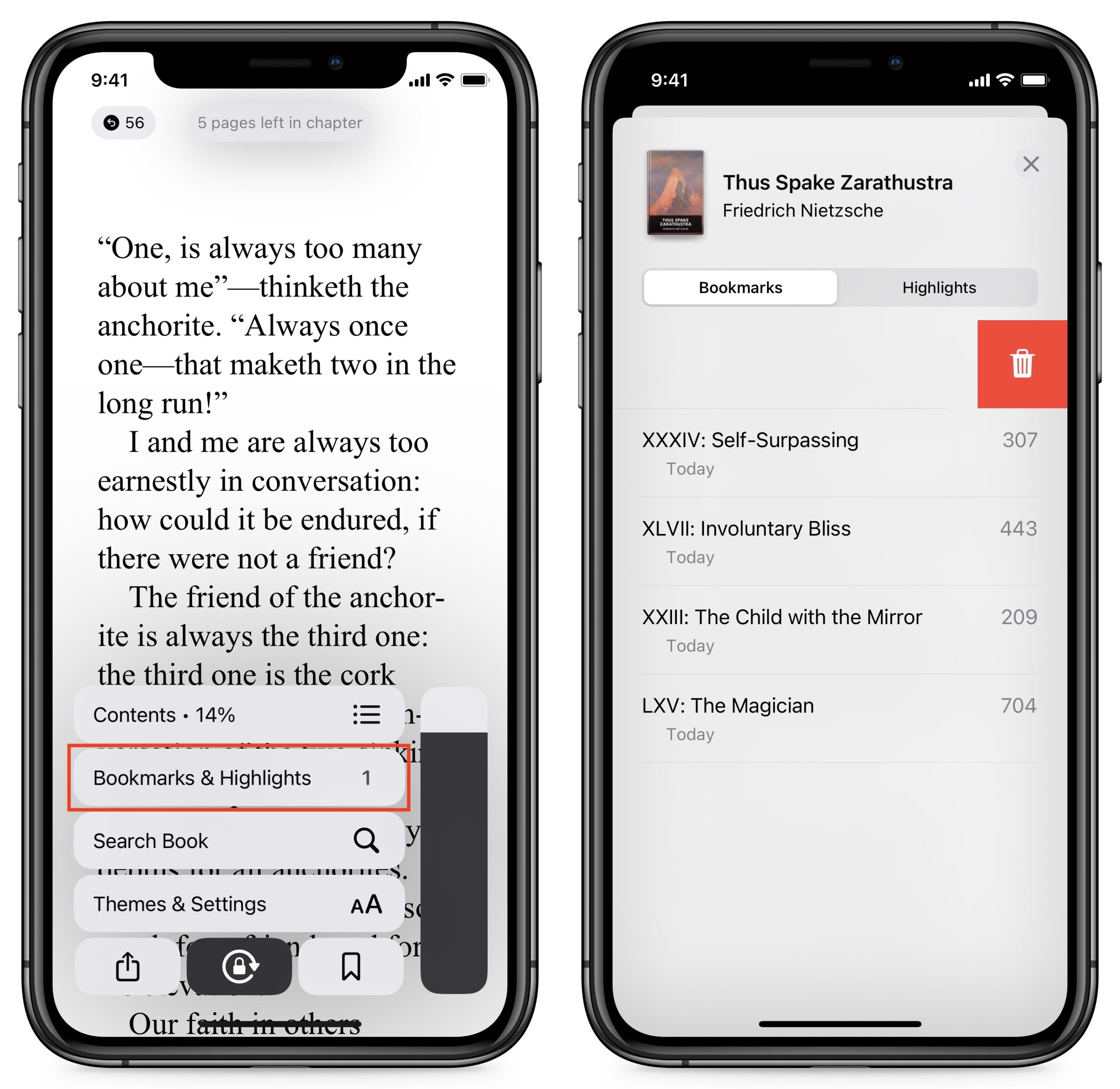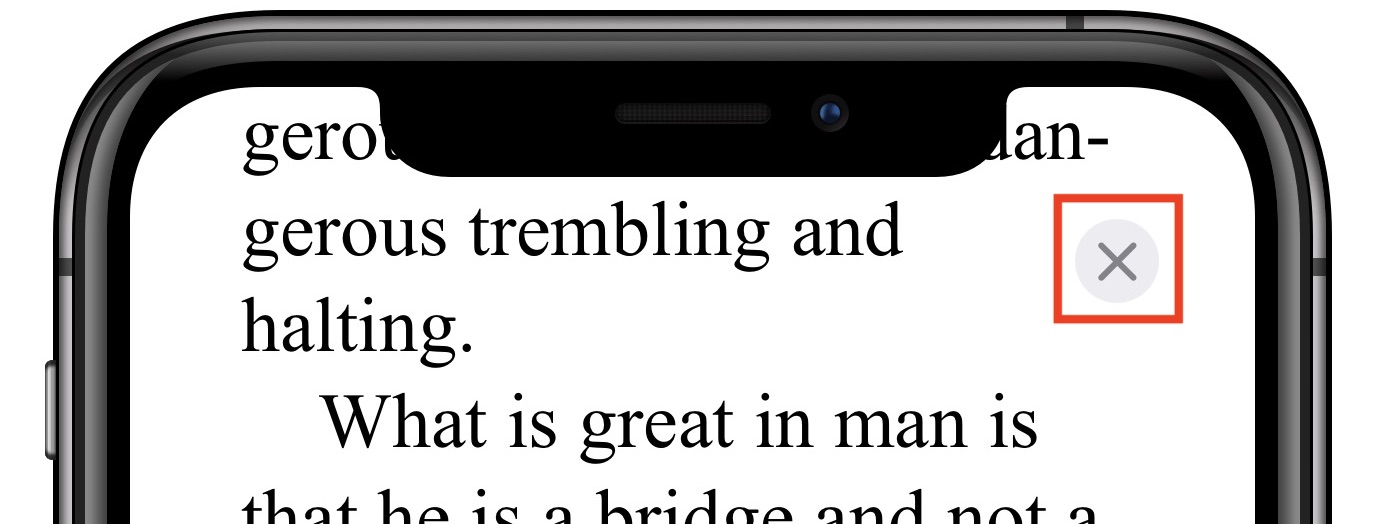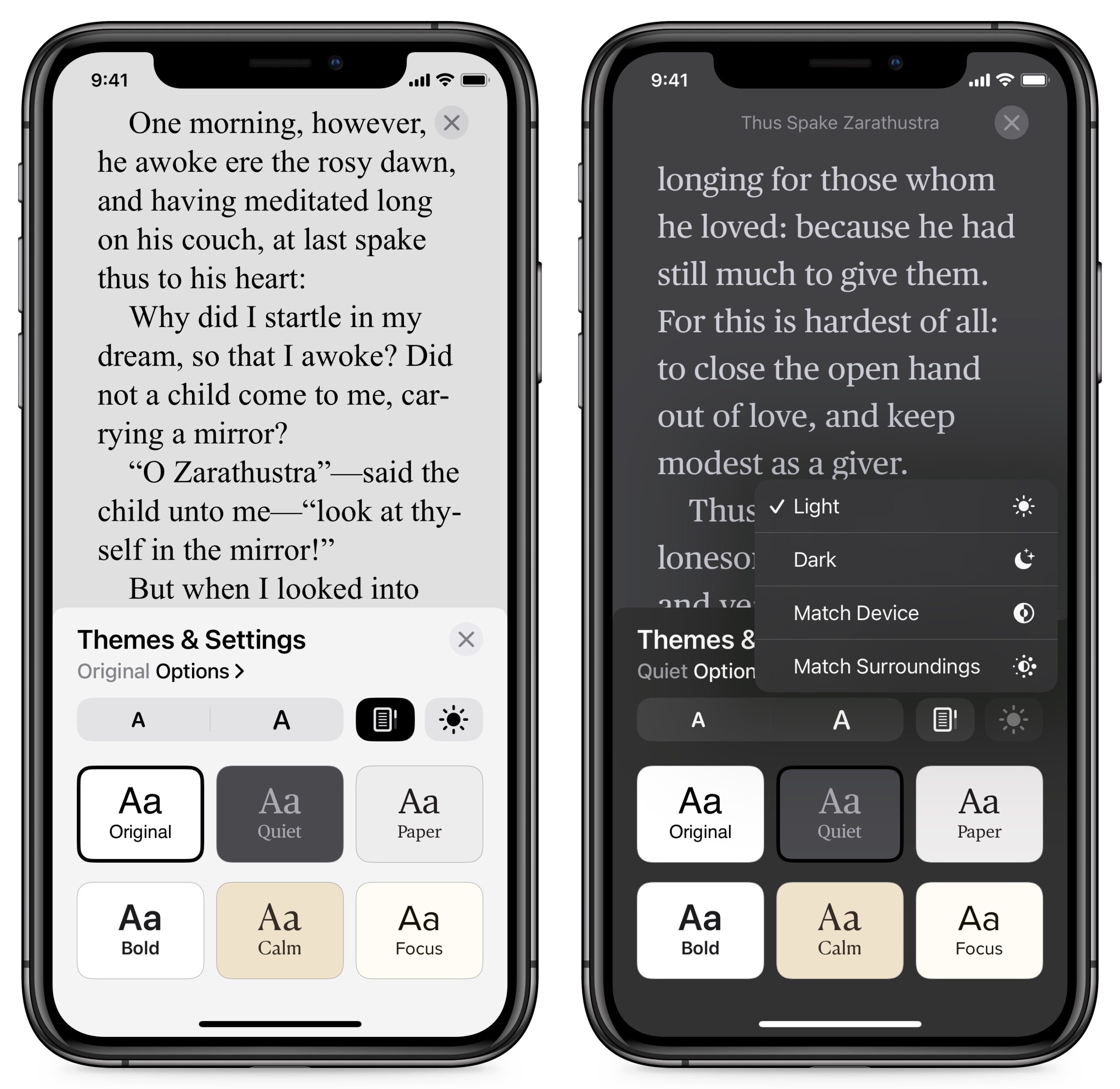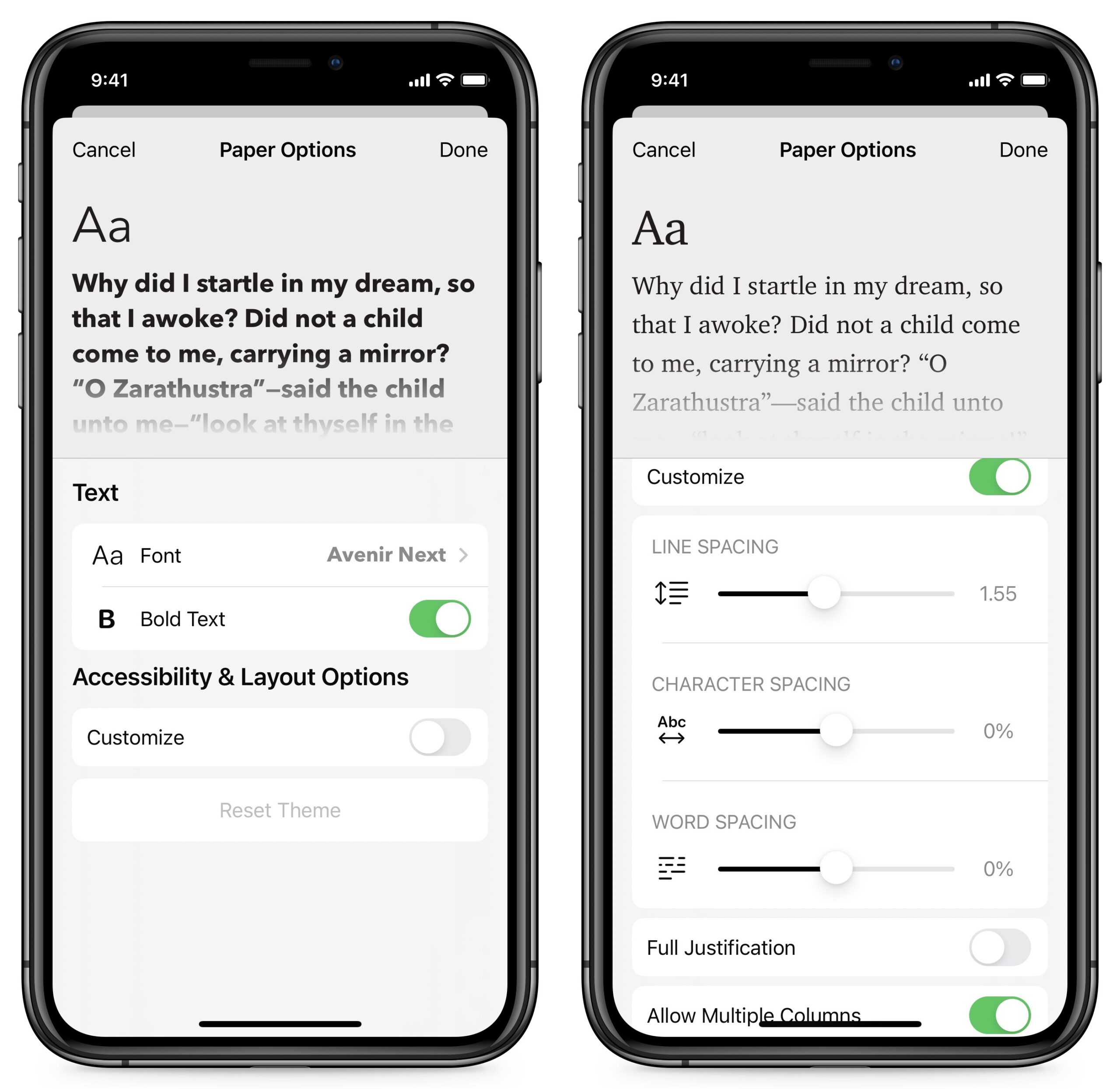Most app changes in iOS 16 are subtle, but Apple completely overhauled the EPUB reading interface in the Books app (PDF reading remains unchanged). I found it bewildering at first and figured that you might too. So here’s a quick guide to finding your way around Books in iOS 16.
To be clear, this is all about reading in Books—the app’s library interface for finding and organizing books is largely unchanged from iOS 15, likely due to the fact that much of it is online content from Apple Books laid out in Web-like scrolling views.
The Reading Menu and Settings
First off, when you’re reading an EPUB (again, as opposed to a PDF), Apple eliminated the toolbar at the top of the screen that could be summoned or dismissed with a tap of the screen. Books now hides most of its controls in the reading menu, accessed by tapping a button that lives by default in the lower-right corner.
Here’s what you’ll find:
- Contents: Shows your current progress in the book and displays the table of contents when tapped
- Search Book: Brings up the search panel
- Themes & Settings: Provides access to preset themes and customization options
- Share: Displays the Share sheet
- Lock Orientation: Locks the orientation of the Books app to portrait, independent of how you’re holding the iPhone or your iPhone’s system setting
- Bookmark: Adds or removes a bookmark on the current virtual page
- Position Indicator: In scrolling mode, the position slider on the right displays your current progress, and you can drag it to navigate within the book quickly.
If you don’t like having the reading menu button on the right, you can switch it to the left in Settings > Books. While you’re there, peruse the other settings, especially Show Status Bar, which keeps the iOS status bar showing at all times while reading, as opposed to temporarily when you tap the screen. On Face ID-equipped iPhones, keeping the status bar showing at all times avoids the awkwardness of text disappearing under the notch or Dynamic Island.
Bringing up the reading menu also displays a subtle progress indicator at the top of the screen that tells you how many pages you have left in the current chapter. That progress indicator—plus another one at the bottom that tells you you’re on page X of Y—also appears with a tap on the screen. It’s all the same information that the iOS 15 version of Books kept at the bottom of the screen when the toolbar was showing, but it can be harder to parse due to sitting on top of the book text in a darkish gray-on-lightish gray bubble.
Creating and Deleting Bookmarks
When I first started using Books in iOS 16, I found myself accidentally creating bookmarks. I eventually realized that Books now creates a bookmark when you double-tap the screen, which is easy to do inadvertently. Fortunately, another double-tap removes the bookmark from a page.
When you create a bookmark, a new entry appears in the reading menu: Bookmarks & Highlights, which you can tap to see your bookmarks and highlights. Tap one to navigate to it. When you’re done with a bookmark, swipe right-to-left to reveal a delete icon.
Navigation within a Book
Books now defaults to vertical scrolling instead of horizontal page flips (but that can be reversed in the Themes & Settings panel), and the skeuomorphic page flip animation is gone. You can jump to the start of any chapter using the table of contents or scroll quickly through the book using the position slider.
However, once you start scrolling, even though a line marks your previous location, the slider doesn’t snap to it, making it nearly impossible to scroll back to your previous location. Plus, how would you return to your previous location after navigating using the table of contents or a bookmark?
Fortunately, there’s a solution.
When you jump around in a book using the table of contents, a bookmark, or the position slider, a button appears in the upper left, showing the previous page location and giving you the option to jump back to your previous location. Once you return to a previous location, that left-hand button changes to let you jump back another step, and another button appears on the right to enable you to jump forward to your spot before the jump back. It’s just like back and forward buttons in a Web browser, but with page numbers.
Finally, in another change associated with the loss of the toolbar from the previous version of Books, there’s no longer a Back button to return to the main Books screen. Instead, tap the ever-present X button at the top right of the screen to return to your library.
Customizing Book Looks
Finally, let’s look at the Themes and Settings panel, which lets you adjust how a particular book looks and works. Most prominent are six preconfigured themes that combine font, size, color, and background settings. They’re the only way to change the background color, but you can change the other settings independently:
- Along the top, tapping the small and large A buttons reduces or increases the text size.
- The next button (a tiny page with a position slider, if you look closely) toggles the book between vertical scrolling and horizontal page flips.
- The far-right button lets you manually choose between Light Mode or Dark Mode. Alternatively, Match Device matches whatever your system setting is, and Match Surroundings uses the sensors in your iPhone to adjust the light mode automatically.
Tap Options to select a particular font (with a few more choices than in the past) and turn on bold text. Even more welcome than the new fonts and bold option are the new Accessibility & Layout options. If you turn on Customize, you can adjust line spacing, character spacing, word spacing, turn on full justification, and allow multiple columns.
If you do a lot of reading in Books, do you find these changes helpful or just different? And have you noticed any other changes from the previous version?



